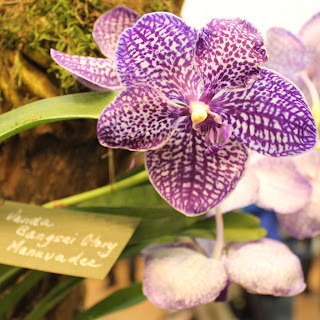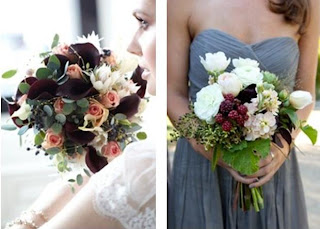More than 1.2 billion cut roses are purchased in the U.S. every year. This means (if my third grade math teacher was correct) every man, woman & child in this country should receive 4.8 roses sometime during the year. I have not received mine yet. Have you?
Hang on! We still have a possibility!
The single largest sales day for "The World's Favorite Flower" is Valentine's Day. (In case you were speculating, Mother's Day is a distant second.) That is right! On 14th February, 1.3 million roses will be deliver as a touchable expression of words unspoken & although other flowers will be delivered, the language of love is still the rose -- accounting for almost 40 percent of all Valentine's Day gift sales.
Although red roses are the color of choice on Valentine's Day, other colors can be given / arranged to create quite a statement.
So how is your rose syntax? Here are some clues that might get you out of the "dog house." Be careful, though. The wrong "words" may just put you into one!
Red roses can really throw you for a circle! According to the American Rose Society, they are the up to date expression of the sender's love & respect. However, this hasn’t always been the case.
In Greek mythology, the red rose represents desire & passion when Aphrodite spills drops of blood onto a white rose while trying to help her injured lover, Adonis. Throughout ancient Christendom, the red rose symbolizes the blood & agony of the crucifixion of Jesus. In prehistoric Persian mythology, a nightingale's self-inflicted breast injury spins a white rose red, changing colors because of the bird's selfishness. And if the petals drop from a fresh cut red rose in an English garden, bad luck soon tracks... and so the superstition goes.
 Pink roses symbolize grace & gentility in modern rose glossary. The pink rose also symbolizes pain, suffering & death in Roman mythology when Apollo turns Rhodanthe into a rose after she unsuccessfully tries to unseat Diana, his sister, as the goddess of the hunt & the protectress of women.
Pink roses symbolize grace & gentility in modern rose glossary. The pink rose also symbolizes pain, suffering & death in Roman mythology when Apollo turns Rhodanthe into a rose after she unsuccessfully tries to unseat Diana, his sister, as the goddess of the hunt & the protectress of women. The different tones of pink can mean different things, too. Deep pink roses say "thank you" by symbolizing gratitude & admiration, while light pink roses express sympathy & admiration.
White roses symbolize reverence & humility. In medieval Christian Europe, Mary is represented by a white rose as a symbol of her cleanliness. In Wales, white roses represent silence & innocence, and are often placed on the grave of a immature child. In some inhabitant American cultures, the white rose represents happiness & security and, hence, is conventionally worn at weddings.
Red & white roses, arranged together or white roses framed in red, speak of unity. The Tudor Rose, a graphic design formed by King Henry VII in 1485, is a red rose laid atop a white - symbolizing the unification of the Houses of York and Lancaster and thus ending the War of Roses.
Yellow roses mean gladness, joy & freedom in the modern rose lexicon. In Islamic tradition, however, they symbolize treachery, deceit & adultery.
If red roses are arranged with yellow roses and blossoms contain both red & yellow coloration, they express joviality, gaiety, & happiness.
Orange roses are often a genetic blend of yellows & reds, and therefore symbolize a blend of symbols – desire &enthusiasm.
Some roses blend pinks & yellows into beautiful pale tones within the same bloom, signifying friendship & sociability.
All things said, the rose is still the expressive selection of lovers around the world. I will memorize that... when I acquire my 4.8 roses this year!












